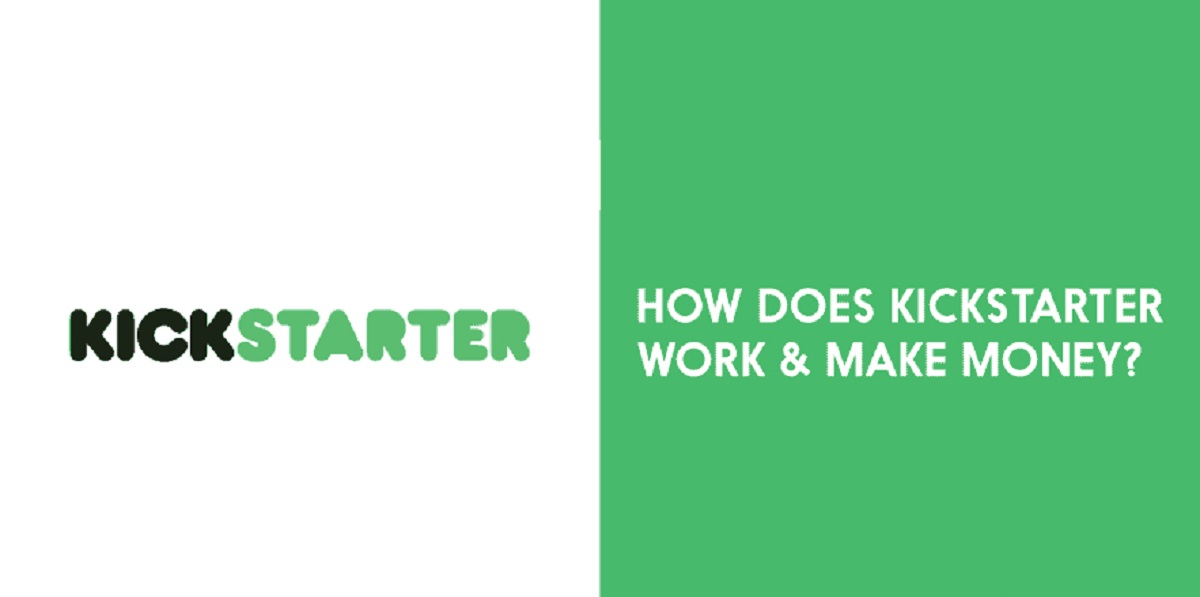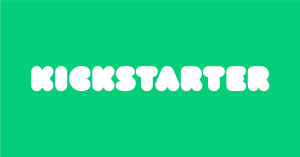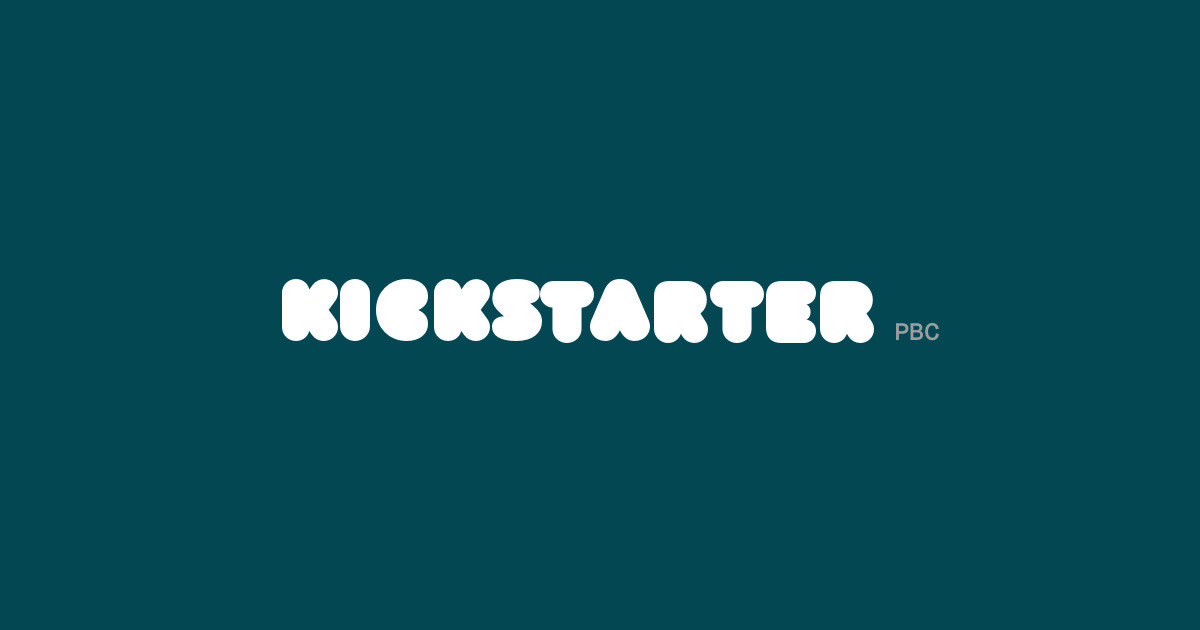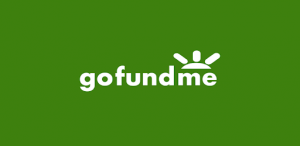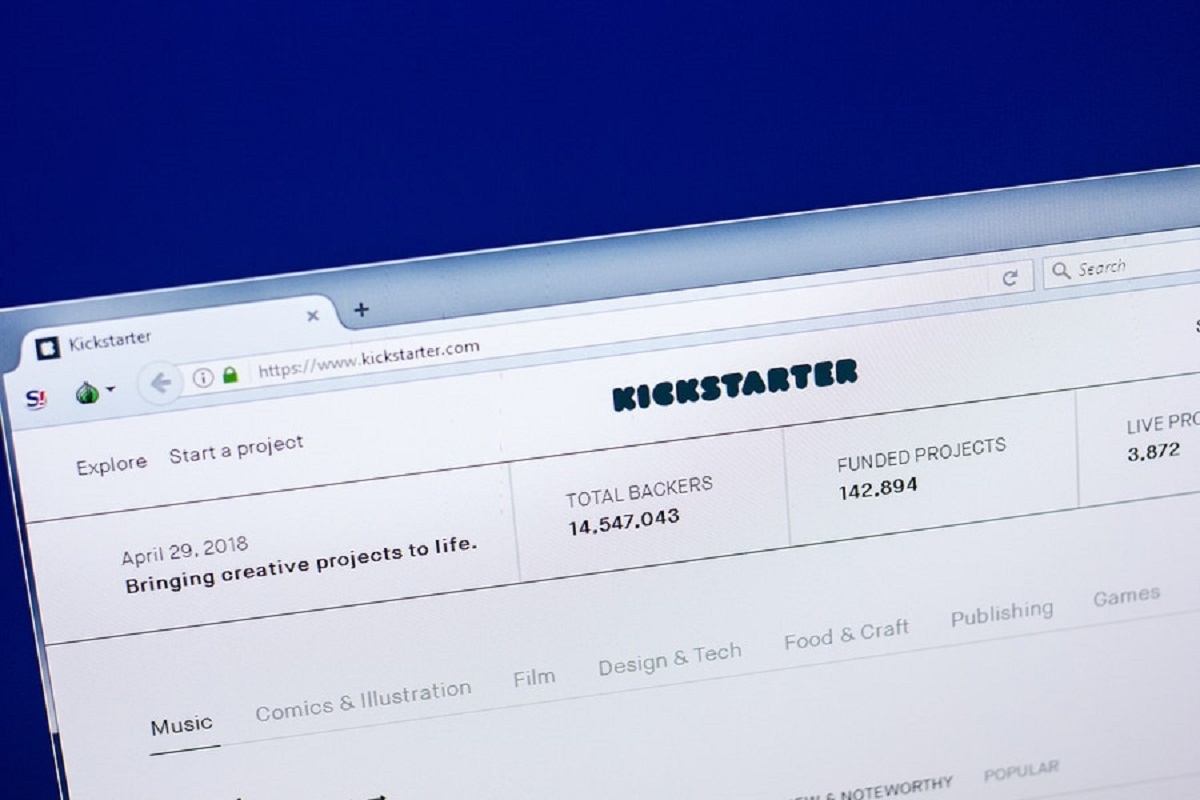Introduction
Since its launch in 2009, Kickstarter has revolutionized the way creative projects are funded. As an online platform, Kickstarter provides a space for individuals and businesses to connect with potential backers who are eager to support innovative ideas. Whether it’s a film, a technology gadget, a fashion collection, or a music album, Kickstarter allows creators to turn their dreams into reality.
The concept behind Kickstarter is simple: individuals pitch their projects, set a funding goal, and offer rewards to backers in exchange for their financial support. This crowdfunding model has opened up doors for countless artists, entrepreneurs, and passionate individuals who otherwise may have struggled to secure traditional funding.
In this article, we will explore how Kickstarter makes its money. Understanding the revenue streams of crowdfunding platforms like Kickstarter is essential to comprehending the broader landscape of the industry.
So, let’s dive in and take a closer look at the fascinating funding model that powers Kickstarter’s success.
The Funding Model of Kickstarter
Kickstarter operates on a reward-based crowdfunding model. This means that creators offer a range of unique rewards or incentives to backers who contribute funds to their projects. These rewards can vary widely, from early access to the product being funded, exclusive merchandise, special acknowledgments, or even personalized experiences.
Backers have the freedom to choose the amount they wish to pledge towards a project. They are motivated by their desire to support innovative ideas, be a part of a creative community, and receive enticing rewards. Backers are only charged if a project reaches its funding goal within a specified time frame. This all-or-nothing approach creates a sense of urgency and allows creators to gauge the level of interest and viability of their projects.
The funding model of Kickstarter relies on the power of the crowd. Instead of seeking large investments from a few individuals or institutions, creators can tap into a larger pool of potential backers, each contributing a smaller amount. This democratization of funding has empowered independent artists and entrepreneurs, as well as facilitated the birth of projects that may have been deemed too niche or risky by traditional funding sources.
Furthermore, Kickstarter operates as an intermediary between creators and backers. It provides a platform that not only facilitates the crowdfunding process but also offers tools, resources, and a supportive community for creators to showcase their projects and engage with their backers. This ecosystem has fostered an environment of collaboration, innovation, and creativity.
Now that we have a good understanding of the funding model that drives Kickstarter’s success, let’s explore how they generate revenue and sustain their platform.
How Kickstarter Makes Money
Kickstarter operates by taking a percentage of the funds successfully raised by projects on its platform. This percentage, known as a platform fee, is deducted from the total amount pledged by backers. The platform fee serves as Kickstarter’s primary source of revenue.
The platform fee is charged only if a project achieves its funding goal within the specified time frame. If a project falls short of its target, no fees are collected, and all pledged funds are returned to the backers. This approach aligns Kickstarter’s financial success with the success of the projects it hosts.
The platform fee is set at 5% of the total funds raised. For example, if a project successfully raises $100,000, Kickstarter would keep $5,000 as its platform fee. This fee covers the costs associated with maintaining and improving the platform, supporting creators, and providing tools and resources to facilitate the crowdfunding process.
It’s important to note that Kickstarter’s platform fee is only applicable to the funds raised for the specific project. It does not include additional funds generated through sales of the project’s finished product or ongoing revenue streams beyond the initial crowdfunding campaign.
In addition to the platform fee, Kickstarter also charges payment processing fees. These fees are collected to cover the costs associated with processing transactions and ensuring secure financial transactions on the platform.
Payment processing fees vary based on the location of the creator’s bank. In the United States, for example, payment processing fees amount to approximately 3% + $0.20 per pledge. These fees are deducted from the total funds raised before disbursing the remaining amount to the creators.
It is worth noting that Kickstarter also introduced a separate fee structure for projects that involve live video or hardware components. Projects falling under these categories are subject to additional fees due to the specialized support and resources required to fulfill these types of projects.
Now that we have explored how Kickstarter makes money through their platform fee and payment processing fees, let’s uncover some of their other revenue streams.
Fees Charged on Successful Projects
One of the primary ways Kickstarter generates revenue is through the fees charged on successful projects. When a project reaches its funding goal within the specified time frame, Kickstarter collects a platform fee of 5% of the total funds raised.
This platform fee serves as Kickstarter’s main source of income and covers the costs associated with running the platform, providing support to creators, and continuously improving the crowdfunding experience for all users.
For example, if a project successfully raises $50,000, Kickstarter would retain $2,500 as its platform fee.
It’s important to note that the platform fee is only applicable to the funds raised for the specific project. Any additional funds generated through sales of the project’s finished product or ongoing revenue streams beyond the initial crowdfunding campaign are not subject to the platform fee.
Kickstarter’s decision to charge a platform fee on successful projects incentivizes creators to set realistic funding goals and work diligently to achieve them. It also aligns Kickstarter’s financial success with the success of the projects hosted on its platform.
By charging a percentage fee based on successful project funding, Kickstarter encourages creators to actively engage with their backers, promote their projects, and deliver on their promises. This creates an ecosystem where the success of projects is mutually beneficial for both creators and Kickstarter.
Additionally, the platform fee helps sustain and improve the overall crowdfunding experience for creators and backers. It allows Kickstarter to invest in technology infrastructure, provide customer support, and develop new features that enhance the crowdfunding process.
Now that we have explored the fees charged on successful projects, let’s move on to the payment processing fees that Kickstarter collects.
Payment Processing Fees
In addition to the platform fee charged on successful projects, Kickstarter also collects payment processing fees to cover the costs associated with processing financial transactions on its platform.
The payment processing fees vary depending on the location of the creator’s bank. In the United States, for example, the payment processing fees amount to approximately 3% + $0.20 per pledge. This means that for each pledge made to a project, Kickstarter deducts 3% of the total amount plus an additional $0.20.
These payment processing fees are deducted from the total funds raised before the remaining amount is disbursed to the creators. It is important to note that these fees are separate from the platform fee and are specific to the transactional processing services provided by payment providers.
Payment processing fees cover various costs, including credit card processing fees, electronic fund transfer fees, and other operational expenses related to securely and efficiently handling financial transactions on the platform.
By charging payment processing fees, Kickstarter ensures the smooth and secure transfer of funds between backers and creators. These fees also contribute to the sustainability of the platform by covering the expenses associated with maintaining a secure payment infrastructure.
The exact payment processing fees may vary depending on factors such as the geographical location of the creator and the currency used for the transactions. Kickstarter works with trusted payment processing partners to ensure a seamless and reliable payment experience for all users.
Now that we understand how Kickstarter collects payment processing fees, let’s discuss any additional fees that may be charged for live video or hardware projects.
Additional Fees for Live Video or Hardware Projects
Kickstarter has a separate fee structure for projects that involve live video or hardware components. These types of projects require specialized support and resources, which result in additional expenses for Kickstarter.
For live video projects, Kickstarter charges a 5% platform fee, just like other projects. However, live video projects also incur an additional 5% service fee on the funds collected. This service fee covers the costs associated with providing the necessary technical infrastructure and support for live streaming events and broadcasts.
Hardware projects, on the other hand, have a slightly different fee structure. Kickstarter charges a 3% platform fee, just like other projects. In addition to that, hardware projects also incur a 5% service fee on the funds collected. This service fee covers the costs associated with providing additional resources and support specific to hardware development and manufacturing.
These additional fees for live video and hardware projects reflect the unique challenges and requirements associated with these types of ventures. By implementing these specialized fee structures, Kickstarter ensures that the platform can effectively support and guide creators through the intricacies of developing and delivering live video events or hardware products.
It is important for creators to carefully consider these additional fees when planning their budgets and setting funding goals for live video or hardware projects. The fees should be factored into the overall project costs to ensure that they align with the project’s financial viability and avoid any unexpected financial burden.
Now that we have explored the additional fees for live video and hardware projects, let’s uncover other revenue streams that contribute to Kickstarter’s financial sustainability.
Other Revenue Streams for Kickstarter
In addition to the platform fees and payment processing fees, Kickstarter has implemented other revenue streams to support its operations and ensure financial sustainability.
One of these additional revenue streams is the inclusion of optional add-on features for creators. Kickstarter offers various tools and services that creators can choose to utilize to enhance their crowdfunding campaigns. These optional add-ons, such as promotional features or marketing services, come at an additional cost. By providing these add-ons, Kickstarter not only generates additional revenue but also offers creators the opportunity to optimize their campaigns and reach a wider audience.
Furthermore, Kickstarter has established strategic partnerships with other companies and organizations. These partnerships often involve cross-promotion or joint initiatives that benefit both Kickstarter and the partnering entities. These collaborations can generate revenue through sponsorships, co-branded campaigns, or promotional opportunities. By leveraging these partnerships, Kickstarter expands its audience reach and taps into new revenue streams.
Another source of revenue for Kickstarter is the sale of exclusive merchandise. The platform offers a range of Kickstarter-branded merchandise, including t-shirts, stickers, and other items. By selling these products, Kickstarter not only generates revenue but also provides an opportunity for backers and creators to show their support and pride in being a part of the Kickstarter community.
Additionally, Kickstarter has introduced a subscription-based service called Kickstarter Gold. This program highlights handpicked projects from past creators and offers exclusive rewards and experiences to backers. The subscription fees collected from Kickstarter Gold members contribute to Kickstarter’s revenue and allow them to continue supporting and promoting innovative projects.
Overall, Kickstarter’s additional revenue streams complement the platform and its mission to support creativity and innovation. These streams enable Kickstarter to provide valuable services, extend its reach, and continually improve the crowdfunding experience for creators and backers.
Having explored the various revenue streams of Kickstarter, let’s now discuss some of the challenges and criticisms associated with the platform’s business model.
Challenges and Criticisms of Kickstarter’s Business Model
While Kickstarter has enjoyed significant success and revolutionized crowdfunding, it is not without its challenges and criticisms. Here are some of the key aspects that have raised concerns and garnered criticism:
1. Project Delivery and Accountability: Kickstarter operates on a trust-based system where backers pledge funds to support projects. However, there have been instances where creators face challenges in delivering the promised rewards or fail to complete projects altogether. This has led to frustration among backers and raised questions about the accountability and transparency of the platform.
2. Project Viability and Quality Control: Kickstarter allows projects of various types and sizes, which can result in a wide range of quality and viability. Critics argue that this lack of quality control and vetting process may lead to questionable projects gaining funding, while potentially worthwhile projects may struggle to gain attention. Maintaining a balance between open accessibility and maintaining quality standards is an ongoing challenge for Kickstarter.
3. Market Saturation and Competition: With an increasing number of crowdfunding platforms available, including Indiegogo and GoFundMe, Kickstarter faces competition for both creators and backers. The saturation of the crowdfunding market presents challenges in attracting and retaining a diverse range of projects and maintaining a strong user base.
4. Exclusivity and Exclusion: Kickstarter operates on an all-or-nothing funding model, which means projects must reach their funding goals within a specified time frame to receive any funds. While this approach creates a sense of urgency, it can also exclude projects that may have a niche audience or require a longer time frame for development. Additionally, some critics argue that the crowdfunding model favors projects with mainstream appeal, potentially limiting opportunities for more innovative or experimental projects.
5. Intellectual Property and Copyright Concerns: As creators showcase their projects on Kickstarter, there may be concerns regarding intellectual property and copyright infringement. While Kickstarter provides some guidelines on intellectual property protection, the responsibility ultimately rests with the creators to ensure proper legal safeguards are in place.
Kickstarter acknowledges these challenges and strives to address them by improving project accountability, enhancing communication between backers and creators, and implementing measures to mitigate project risks. Through community feedback and ongoing improvements, Kickstarter aims to foster a trustworthy and inclusive crowdfunding ecosystem.
Now that we have examined the challenges and criticisms of Kickstarter’s business model, let’s summarize our findings.
Conclusion
Kickstarter has revolutionized the funding landscape by providing a platform where creators can turn their creative ideas into reality through the support of backers. Its reward-based crowdfunding model has empowered countless individuals and businesses to bring their projects to life.
As we explored in this article, Kickstarter generates revenue primarily through platform fees, charging a 5% fee on successful projects. In addition, payment processing fees are collected to cover the costs of financial transactions on the platform. Kickstarter also leverages other revenue streams such as optional add-ons, partnerships, merchandise sales, and subscription-based services.
However, Kickstarter faces challenges and criticisms that include project delivery and accountability, project viability and quality control, market saturation and competition, exclusivity and exclusion, and intellectual property concerns. The platform acknowledges these issues and works towards enhancing project accountability, improving communication between backers and creators, and addressing marketplace challenges.
Despite these challenges, Kickstarter has undeniably made a significant impact on the world of crowdfunding and has democratized the funding process for creative endeavors. By connecting creators with a global community of backers, Kickstarter has paved the way for innovation, fostering an environment where unique ideas can flourish and independent creators can thrive.
Looking ahead, Kickstarter continues to evolve and adapt to meet the needs of creators and backers alike. With an ongoing commitment to transparency, accountability, and user experience, Kickstarter remains at the forefront of the crowdfunding industry, facilitating the realization of countless creative visions.
In conclusion, Kickstarter’s funding model, coupled with its innovative approach and commitment to fostering creativity, has transformed the way projects are funded and supported. As the platform continues to evolve and address its challenges, it remains a driving force in empowering creators and shaping the future of crowdfunding.







